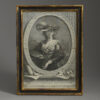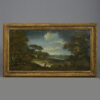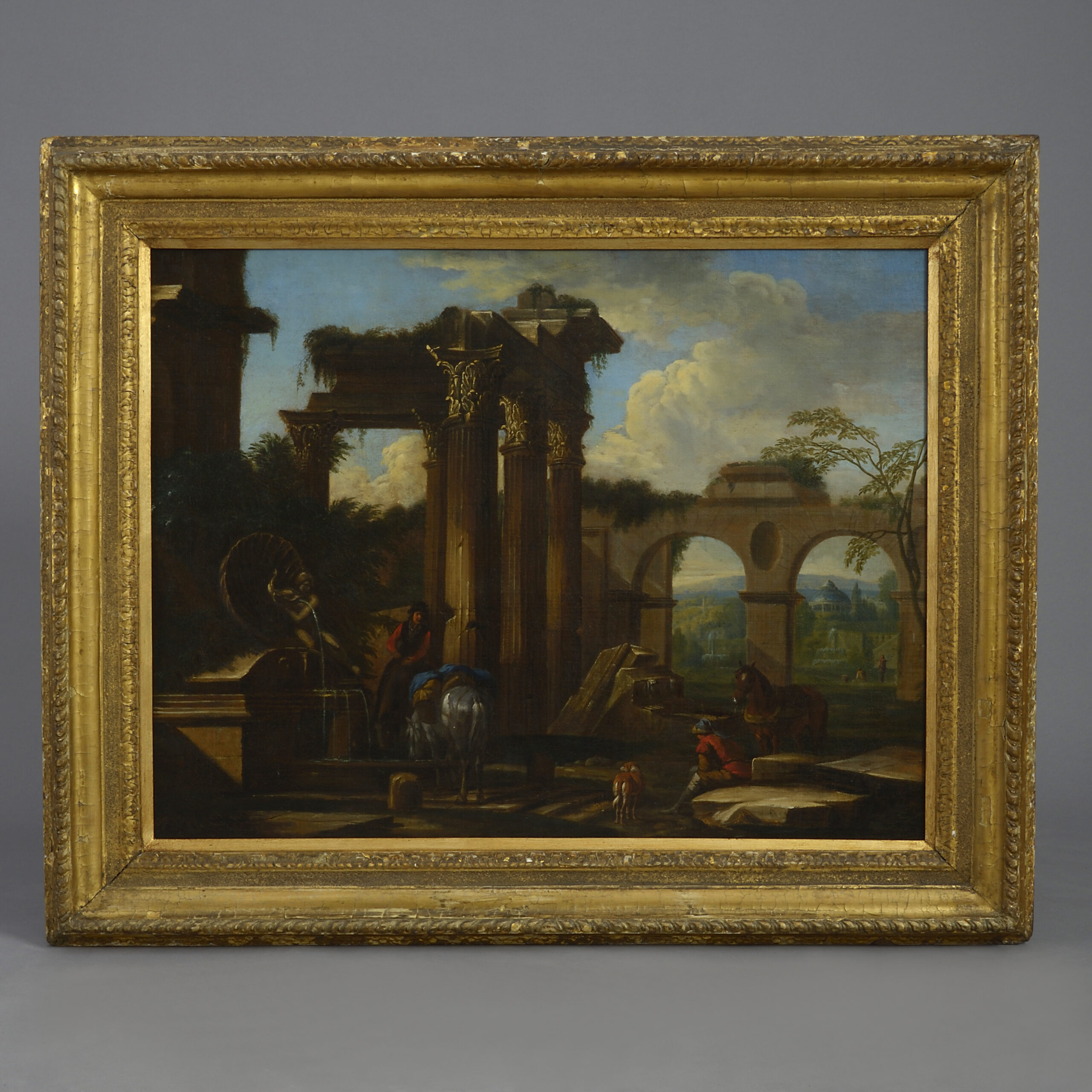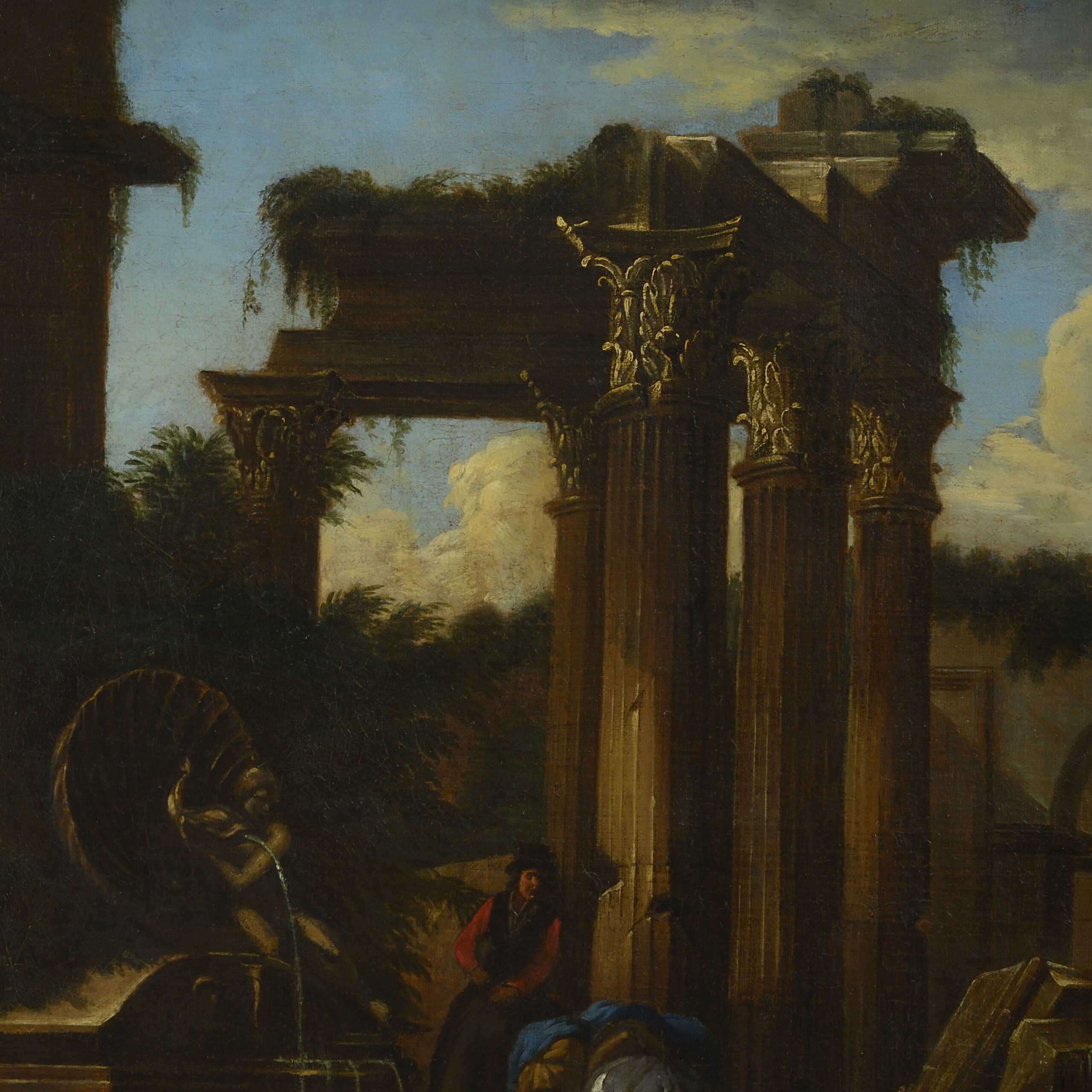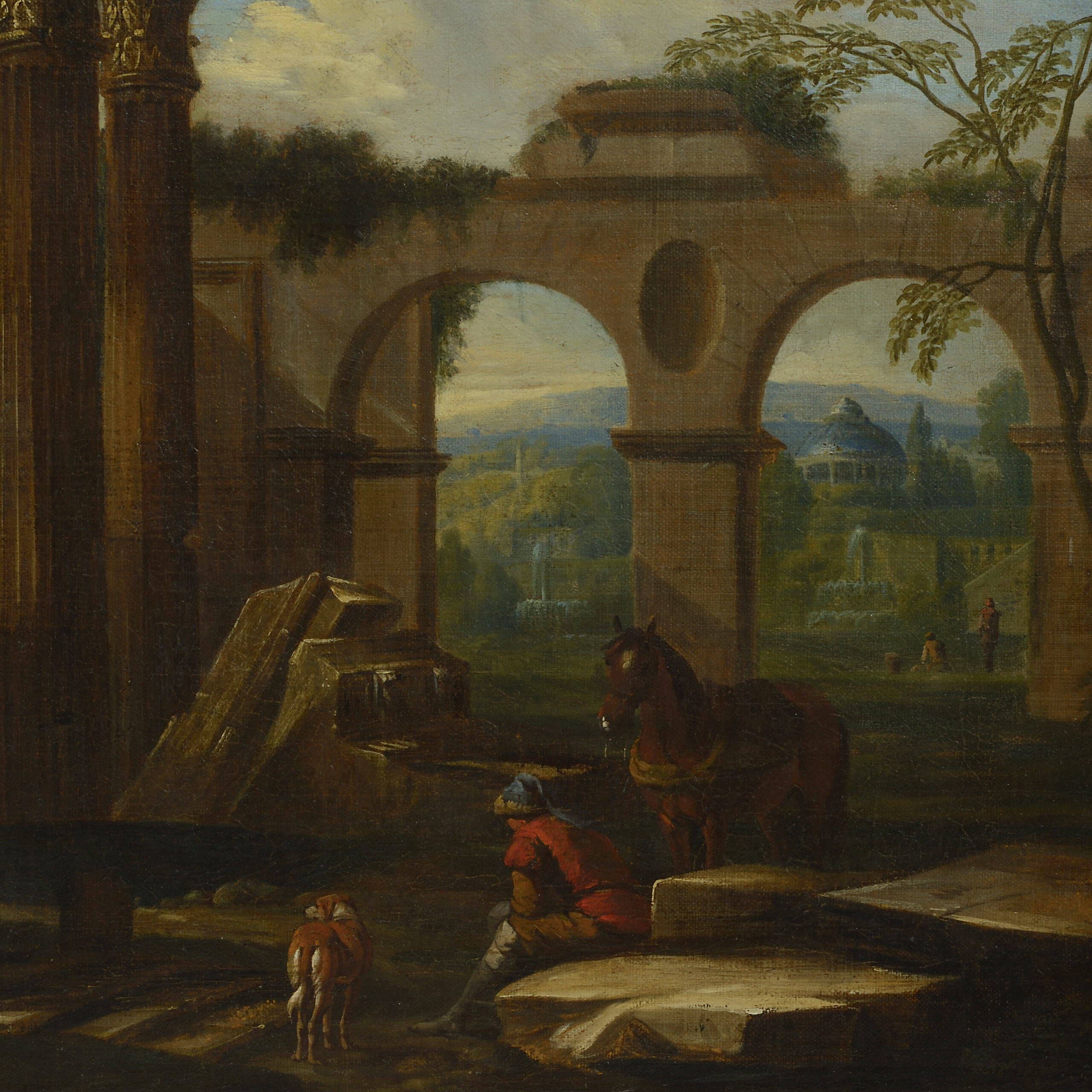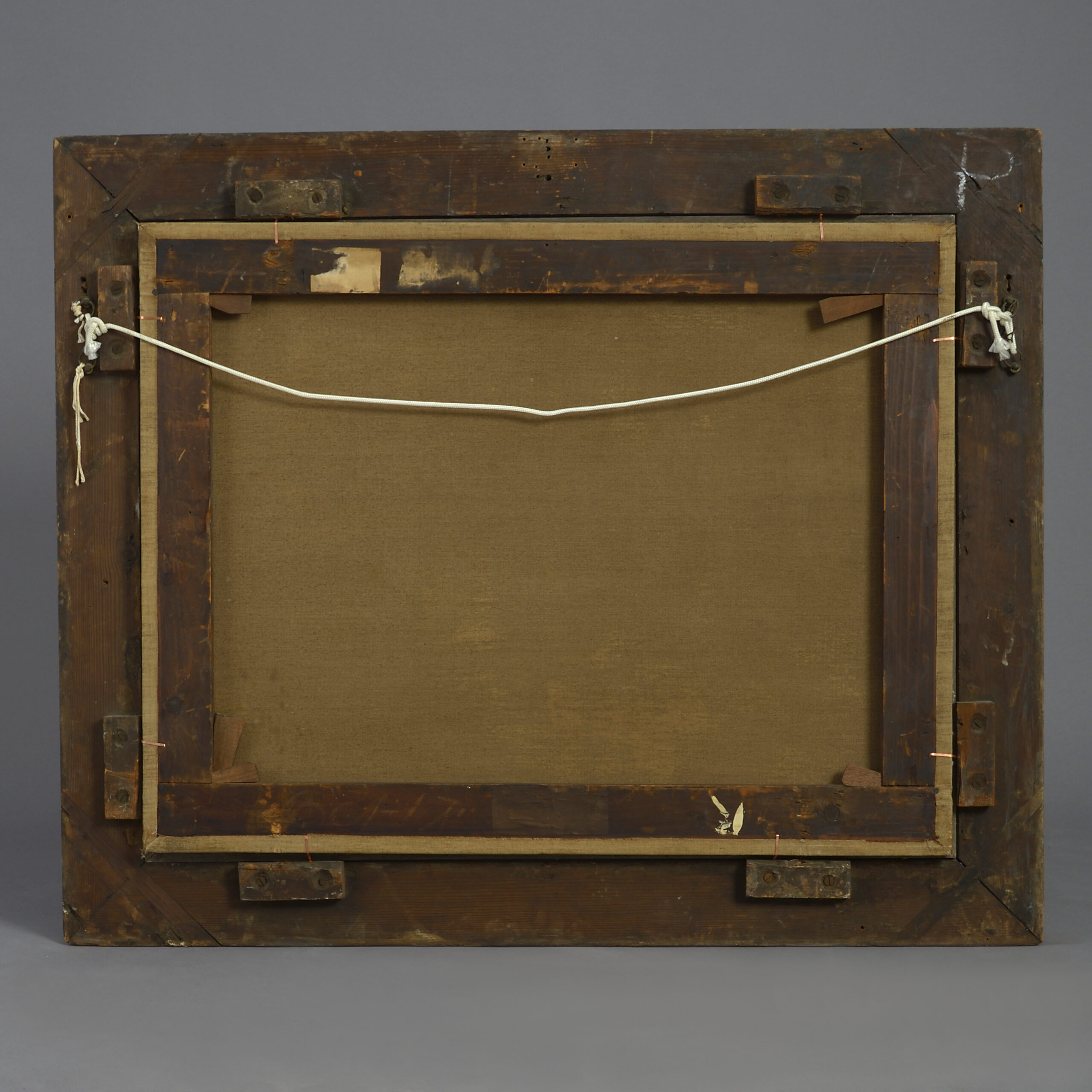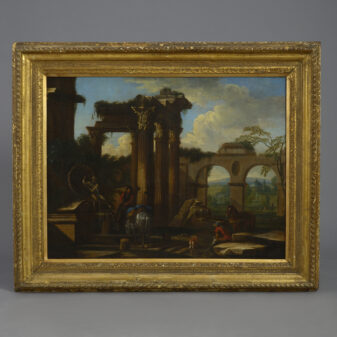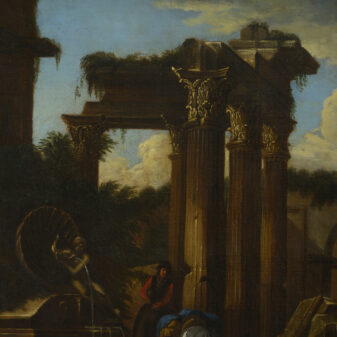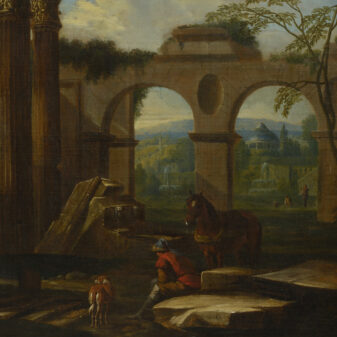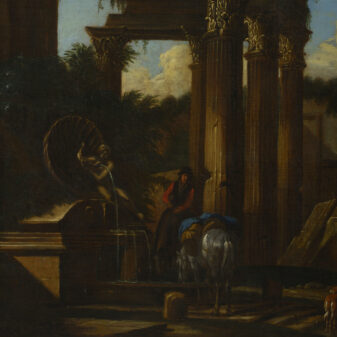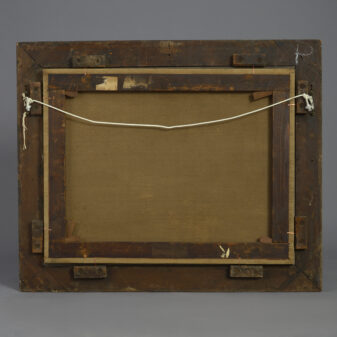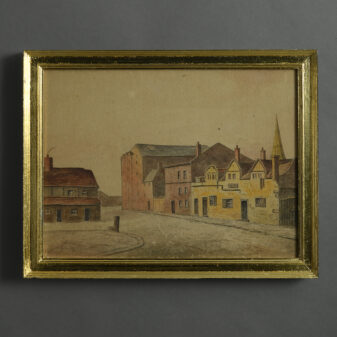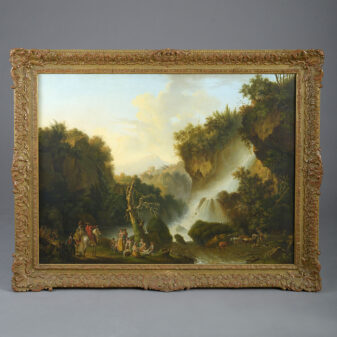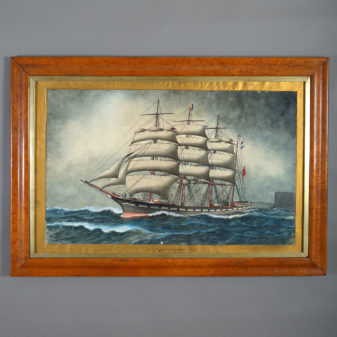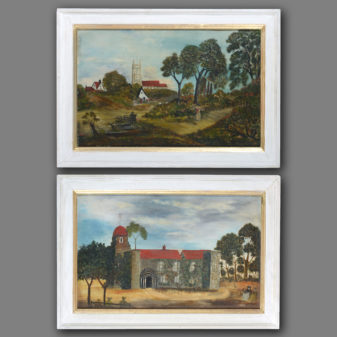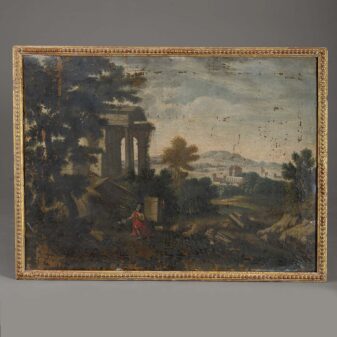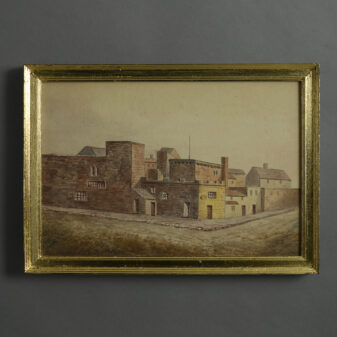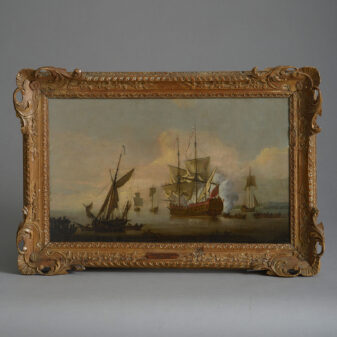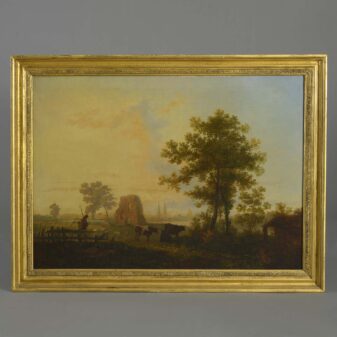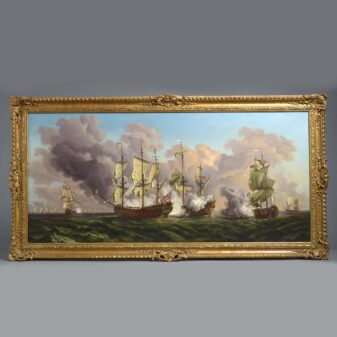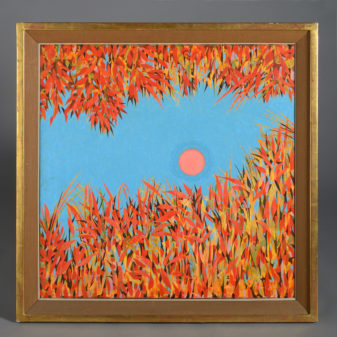Studio of Giuseppe Zocchi, An 18th Century Architectural Capriccio, Oil on Canvas
Height 31 1/2 inches (80 cm)
Width 38 inches (96.5 cm)
Depth 2 inches (5 cm)
Studio of Giuseppe Zocchi, eighteenth century
An architectural capriccio with classical remains and extensive view beyond
Oil on canvas; held in an eighteenth century giltwood frame
Giuseppe Zocchi (c.1711-1767) spent much of his career in Florence, where he earned the sobriquet ‘Canaletto of Florence’ for his vedute of the city. At an early age he went to study the work of his contemporaries in Rome, Bologna, Milan and in particular Venice, where he remained for almost two years before returning to Florence around 1741. As well as the views for which he was famed, he also undertook many works depicting ancient ruins following in the footsteps of Giovanni Paolo Panini, whose work he studied at length during a long stay in Rome in 1744.
This work is strongly indebted to Zocchi’s approach. Professor Sestieri (G. Sestieri, Il Capriccio architettonico in Italia nel XVII e XVIII secolo, Rome, 2015) notes that Zocchi’s capriccio is clearly part of the Panini tradition, yet striking in its independence. As here the foreground has architectural fragments, but unlike Panini the composition is structured with a second layer of architectural ruins beyond the three Corinthian columns, creating greater depth in the background, which opens out under the arches to reveal an extensive classical landscape. The arrangement of the figures is one not derived from Panini or his contemporary Antonio Joli but indeed one original to Zocchi. These collective elements suggest this capriccio was painted by an artist working possibly in Zocchi’s studio after his main stay in Rome.
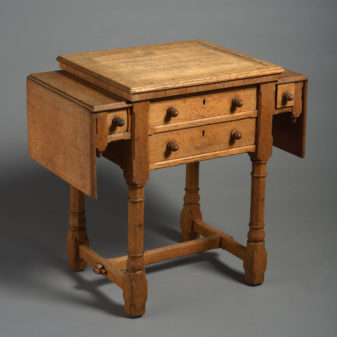 19th Century Early Victorian Gillows Metamorphic Oak Work Table
1 × £3,800
19th Century Early Victorian Gillows Metamorphic Oak Work Table
1 × £3,800 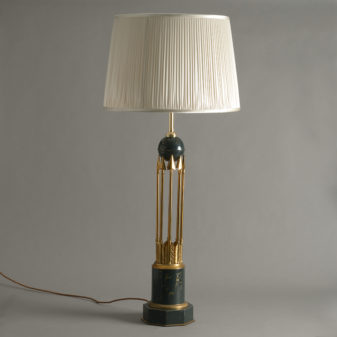 A Mid-Century Empire Style Arrow Lamp Base
1 × £1,850
A Mid-Century Empire Style Arrow Lamp Base
1 × £1,850 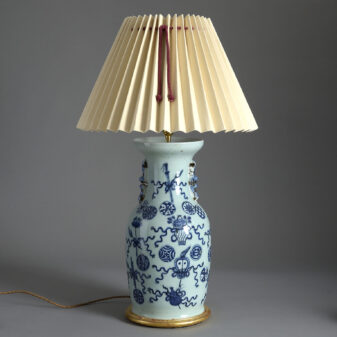 Early 20th Century Celadon and Blue Glazed Vase Lamp
1 × £2,450
Early 20th Century Celadon and Blue Glazed Vase Lamp
1 × £2,450 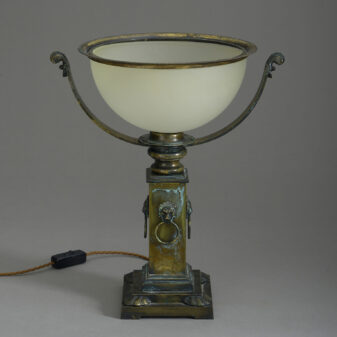 Mid-Century Classical Bronzed Dish Light
1 × £1,850
Mid-Century Classical Bronzed Dish Light
1 × £1,850 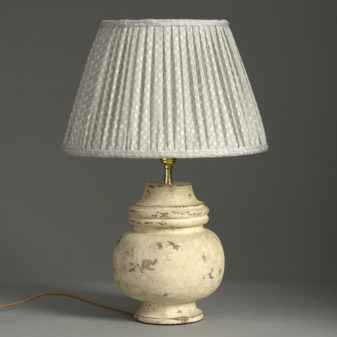 A Turned and Painted Bulbous Table Lamp
1 × £750
A Turned and Painted Bulbous Table Lamp
1 × £750 
